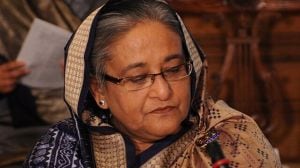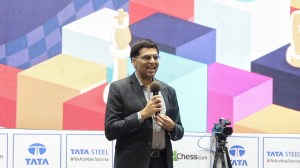After six Congress MLAs cross-voted, the party’s candidate Abhishek Manu Singhvi and BJP nominee Harsh Mahajan got 34 votes each. In the event of a tie, the winner must be decided by a draw of lots, in which Mahajan eventually emerged as the victor.

How are RS MPs elected?
The Rajya Sabha MPs are elected by the respective state Legislative Assemblies’ members through proportional representation of a single transferable vote.
Story continues below this ad
Like other elections, voting for the Rajya Sabha polls, too, were meant to have a secret ballot. But, in 2003, the Atal Bihari Vajpayee government amended the Representation of the People (RP) Act, 1951 to enable an “open ballot” for elections to the Upper House.
When this was legally challenged by ex-MP and journalist Kuldip Nayar, the Supreme Court upheld it in 2006. “The contention that the right of expression of the voter at an election for the Council of States is affected by open ballot is not tenable, as an elected MLA would not face any disqualification from the membership of the House for voting in a particular manner. He may at the most attract action from the political party to which he belongs,” the court had observed.
What is the rule in case of a tie?
The RP Act provides for a draw of lots to decide the winner in case of an “equality of votes” in an election.
“If, after the counting of the votes is completed, an equality of votes is found to exist between any candidates, and the addition of one vote will entitle any of those candidates to be declared elected, the returning officer shall forthwith decide between those candidates by lot, and proceed as if the candidate on whom the lot falls had received an additional vote,” Section 65 of the Act states.
Story continues below this ad
In the case of an election petition – a legal challenge to an election result – if there is an equality of votes, the High Court “shall decide between them by lot and proceed as if the one on whom the lot then falls had received an additional vote,” says Section 102 of the Act.
However, in the case of a tie in a Rajya Sabha election, Section 81 (3) of the Conduct of Election Rules, 1961 applies, according to former legal advisor to the Election Commission (EC) S K Mendiratta. The section says in case there is only one vacancy and two candidates have the same value of votes, “the returning officer shall decide by lot which of them shall be excluded; and after excluding him in the manner aforesaid, declare the other candidate to be elected”.
What happened in Himachal RS poll?
One seat in Himachal Pradesh went to the polls on Tuesday, as part of a total of 56 Rajya Sabha seats across 15 states, which would fall vacant in April due to the retirement of MPs.
In the 68-member state Assembly, the Congress has 40 MLAs and the support of three Independents, while the BJP has 25 MLAs. After cross-voting by six Congress MLAs and the three Independents supporting the BJP candidate, both parties’ nominees got 34 votes each, leading to a draw of lots. Singhvi’s name figured in the slip drawn, which led to his defeat and election of Mahajan.
Story continues below this ad
Has a draw of lots been used before?
The EC does not maintain data on results of the Rajya Sabha elections on its website, while its spokesperson did not respond to queries if the Himachal case was the first one.
The Upper House elections have become more competitive in recent years. The Congress’s candidate in the 2022 Rajya Sabha election from Haryana, Ajay Maken, was defeated when a party MLA cross-voted in favour of Independent candidate Kartikeya Sharma.
“The last three decades have seen a shift in Rajya Sabha elections. What earlier used to be a safe route to Parliament is now a no-holds-barred competitive process. Political parties can no longer count on the discipline of their legislators to assure the victory of their candidates. And this is after the law has changed requiring MLAs to show their vote to their party representative before casting it,” said Chakshu Roy, the head of legislative and civic engagement at PRS Legislative Research.
According to former Chief Election Commissioner O P Rawat, the use of a draw of lots to decide the Rajya Sabha polls was “unheard of”, though there had been rare instances of it being used in the Assembly and the Lok Sabha elections.
Story continues below this ad
The draw of lots has been used in the elections to local bodies in the past. In 2020, the Madras High Court had upheld the validity of the rule regarding the draw of lots in the Tamil Nadu Panchayats (Elections) Rules when it was challenged. The election to ward number 220 of the Brihanmumbai Municipal Corporation (BMC) in 2017 was decided by a draw of lots when both the BJP and Shiv Sena candidates got an equal number of votes.

































